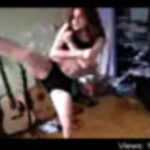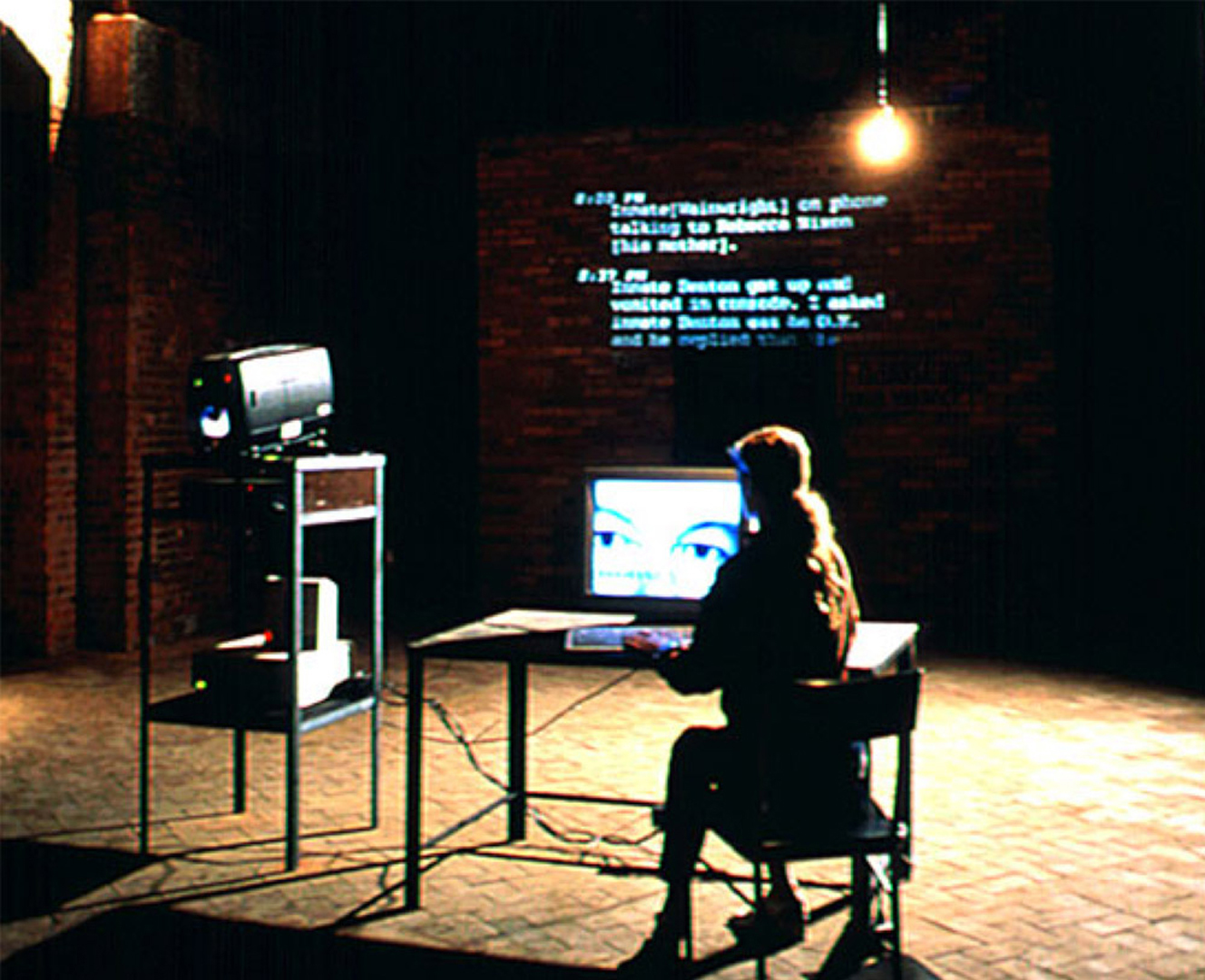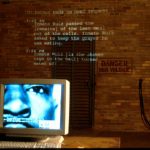Natalie Bookchin: Marking Time
Title:
- Marking Time
Artist(s) and People Involved:
Exhibiting Artist(s):
Symposium:
- ISEA97: Eighth International Symposium on Electronic Art
-
More artworks from ISEA97:


Artist Statement:
In a darkened room, a projected text appears to be typed onto a wall, one letter at a time. The text is a log kept by a death row prison guard of the activities of three prisoners for four day leading up to their triple execution in Arkansas in January 1997. The guard, who watches day and night, describes the prisoners’ most intimate activities, from what they are eating to when they go to the toilet, to whom they are speaking to and what they are saying. A viewer enters the room and sit at a table with a computer and monitor, facing the projection. A bare light bulb dangles down near the table, creating a harsh but dimly lit glow around the monitor. As if entering a visiting room in a prison, the seated viewer is now face to face with one of the prisoners whose image stares out from the monitor. The user may select the face of each of the three prisoners and may then pan each of the faces, slowly scanning over nose, mouth, ears, etc. As the user scans, the computer responds with constant and precise feedback about the user’s movements and selections: where she has scanned, the amount of time she has been doing so, what her movements across the screen have been, which part of the face she is currently touching, who she is touching, etc… Meanwhile, the computer stores all of the user’s mouse movements and upon a mouse click replays them as a motion study in the form of an abstract animated line drawing. Thus the viewer takes on the position of the prison guard, maintaining visual control over the prisoners’ bodies and their movements. At the same time, she is placed in the position of the prisoner, as her own movements and actions on the computer are constantly monitored, displayed and recorded. Through her interaction, she becomes a player on both sides of the narrative that she has merely witnessed in the projection. The physical layout of the installation contrasts two forms of spectatorship: a public projection and a private encounter with a monitor; in the publicly viewed projection the viewer remains outside looking in on an acute example of regulated time and state control of life and death. In contrast, on the computer monitor, the user is face to face (interfacing) with a — now dead — individual, and is no longer a passive viewer, but now, in fact, a “user” implicated in the narrative. The work also reflects on the ability of the computer to survey and record all choices and movements of any user at any time and parallels this distinctive quality to the model of the prisoner/prison guard.
Process Information:
The user may select the face of each of the three prisoners and may then pan each of the faces, slowly scanning over nose, mouth, ears, etc. As the user scans, the computer responds with constant and precise feedback about the user’s movements and selections: where she has scanned, the amount of time she has been doing so, what her movements across the screen have been, which part of the face she is currently touching, who she is touching, etc… Meanwhile, the computer stores all of the user’s mouse movements and upon a mouse click replays them as a motion study in the form of an abstract animated line drawing. Thus the viewer takes on the position of the prison guard, maintaining visual control over the prisoners’ bodies and their movements. At the same time, she is placed in the position of the prisoner, as her own movements and actions on the computer are constantly monitored, displayed and recorded. Through her interaction, she becomes a player on both sides of the narrative that she has merely witnessed in the projection. The physical layout of the installation contrasts two forms of spectatorship: a public projection and a private encounter with a monitor; in the publicly viewed projection the viewer remains outside looking in on an acute example of regulated time and state control of life and death.
Additional Images:
Category:
All Works by the Artist(s) in This Archive:
- Natalie Bookchin

Marking Time
[ ISEA97]
CD-ROM: Databank of the Everyday
[ ISEA97]
Mass Ornament
[ ISEA2013]







